When it comes to historical epics, they tend to go one of three possible fates. First, there is the commercial and critical-lauded route, usually with various accolades. A few examples of this sort would be Gone With The Wind, The Ten Commandments, Ben-Hur, Spartacus, Lawrence of Arabia, Doctor Zhivago, Gandhi, The English Patient, and Titanic.
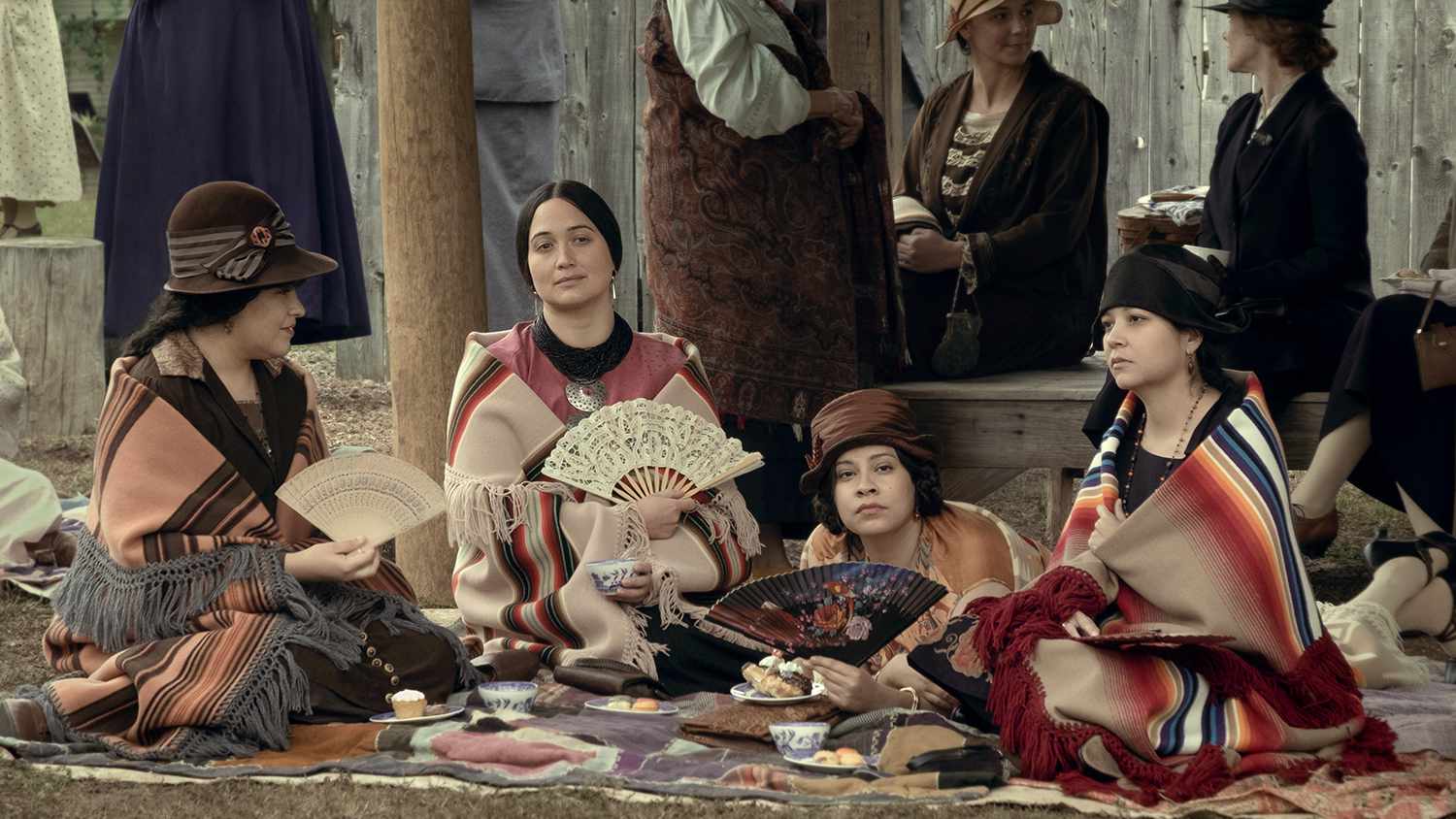
The next possibility is one of mixed reactions, mediocre box office returns, and/or indifference. Some examples would include Wolfgang Peterson’s Troy, Oliver Stone’s Alexander, and Ridley Scott’s Kingdom of Heaven. Finally, there is the flop category with poor reviews and losing money. In recent years, historical epics have been struggling, such as The Last Duel, Emancipation, and The Northman.
Lately, though, the status quo might be subject to change. And for good reason.
Killers of The Flower Moon is the latest Western epic currently playing in theatres. Directed by Martin Scorsese, the film succeeds as a sprawling epic, because it challenges conventions by not being the stereotypical Western that audiences might have come to expect. Nor does the movie shy away from looking at the darker side of American history, which has been given more exploration in recent years. Specifically, Scorsese’s film examines the role of exploitation and the destructive effects of cultural genocide. The film also gives indigenous people more exploration and depth concerning the prejudice they face. Moreover, the First Nations peoples are active players in the story and not background players or cannon fodder. This stands in contrast to previous Western-themed films like The Searchers (complete with white actors in brown face makeup) or Dances With Wolves (in which the story hinges on Kevin Costner’s U.S Cavalry officer), in which white people receive more focus to the detriment of Indigenous peoples.
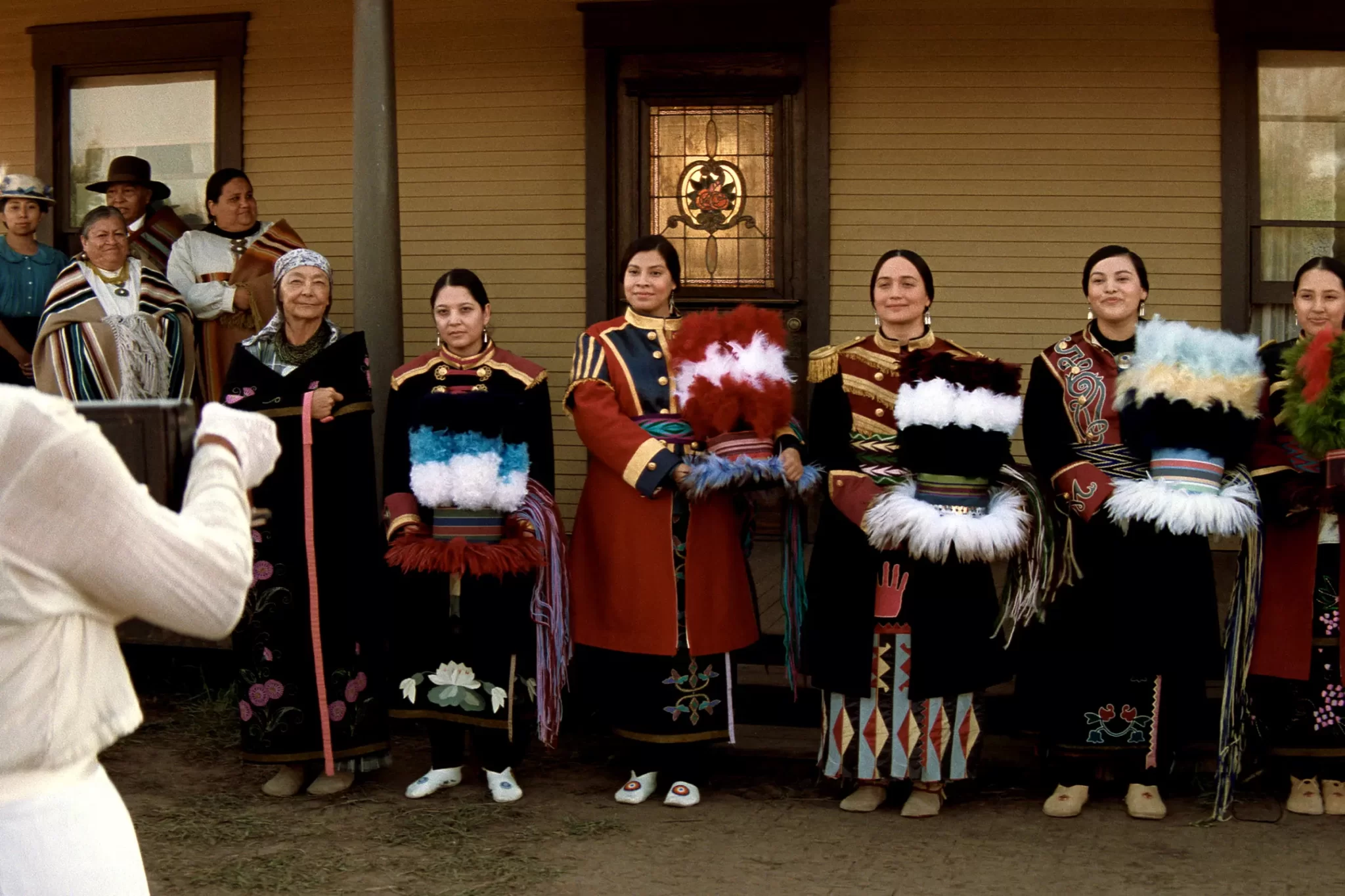
Set in Osage County, the story opens in the late 1910s as Osage tribal leaders bury a peace pipe in the ground. It is clear that trouble is afoot, and this is causing them to worry. What’s more, many younger members of the Osage nation have started assimilating into mainstream society by marrying white people. As a result, mixed bloodlines are becoming more common. The Osage’s old ways of tribal life are ending, and they are preparing for the inevitability of change.
Ernest Burkhart (Leonardo DiCaprio) returns home from fighting in World War One to join his brother Byron (Scott Shepherd) in Oklahoma. His uncle William Hale (Robert De Niro) is a local rancher and reserve depot sheriff in Osage County, and he prides himself on being a seemingly loyal supporter and good friend to the Indigenous people. William informs Ernest about the Osage people holding territorial rights to acres of land. Due to racist legislation, however, they need to have white guardians to access the money they’re owed, because the Burke Act deems the Indigenous peoples and mixed-race individuals to be incompetent and incapable of making their own decisions. What’s more, the Osage nation retains mineral rights, and the land they’re sitting on has a lot of oil underneath. In the eyes of many white folks, this land is quite lucrative and valuable.

At the behest of William, Ernest goes off to court a local Osage woman Mollie Kyle (Lily Gladstone), who is part of a family that owns rights to oil. He develops a relationship with her while moonlighting as a thief and burglar who commits crimes against the Osage people. Over the next few years, Ernest and Mollie settle into their marriage and raise three children. While they seem like a happy family, Ernest is looking ahead towards the future. He is all too aware that he will get more deeds to land if Mollie’s family members pass away. Indeed, Mollie has relatives who are in frail health, and William is also knowledgeable about this fact. All that needs to happen is for all the Kyle family to die.
Shortly afterward, Osage people in the community begin dying off in various ways. Mollie’s sister dies from a strange illness, and another sister of hers is murdered (at the hands of Byron). Even Mollie’s ex-husband is killed shortly after taking out a life insurance policy on himself. As a result, the local police (who are corrupt and under William’s control and influence) do not fully investigate the crimes. Not satisfied with this outcome, the Osage nation tries to petition Congress to look into the murders, but their representative is killed when he goes to Washington.
Meanwhile, Mollie herself is getting suspicious about what’s happening to her family and community. She hires a private investigator to look into the murders, but Ernest manages to beat and scare him off. Despite struggling with ill health and diabetes, Mollie goes to Washington and petitions the President to do something about the killings. This results in William urging Ernest to poison Mollie’s insulin medicine to slow her down. Despite mixed feelings, Ernest goes through with the act, and Mollie continues to get sicker. Not long afterward, Tom White (Jesse Plemons) from the Bureau of Investigation comes to Oklahoma to find the killers. This makes Ernest start to fear that he and William are in danger of being caught.
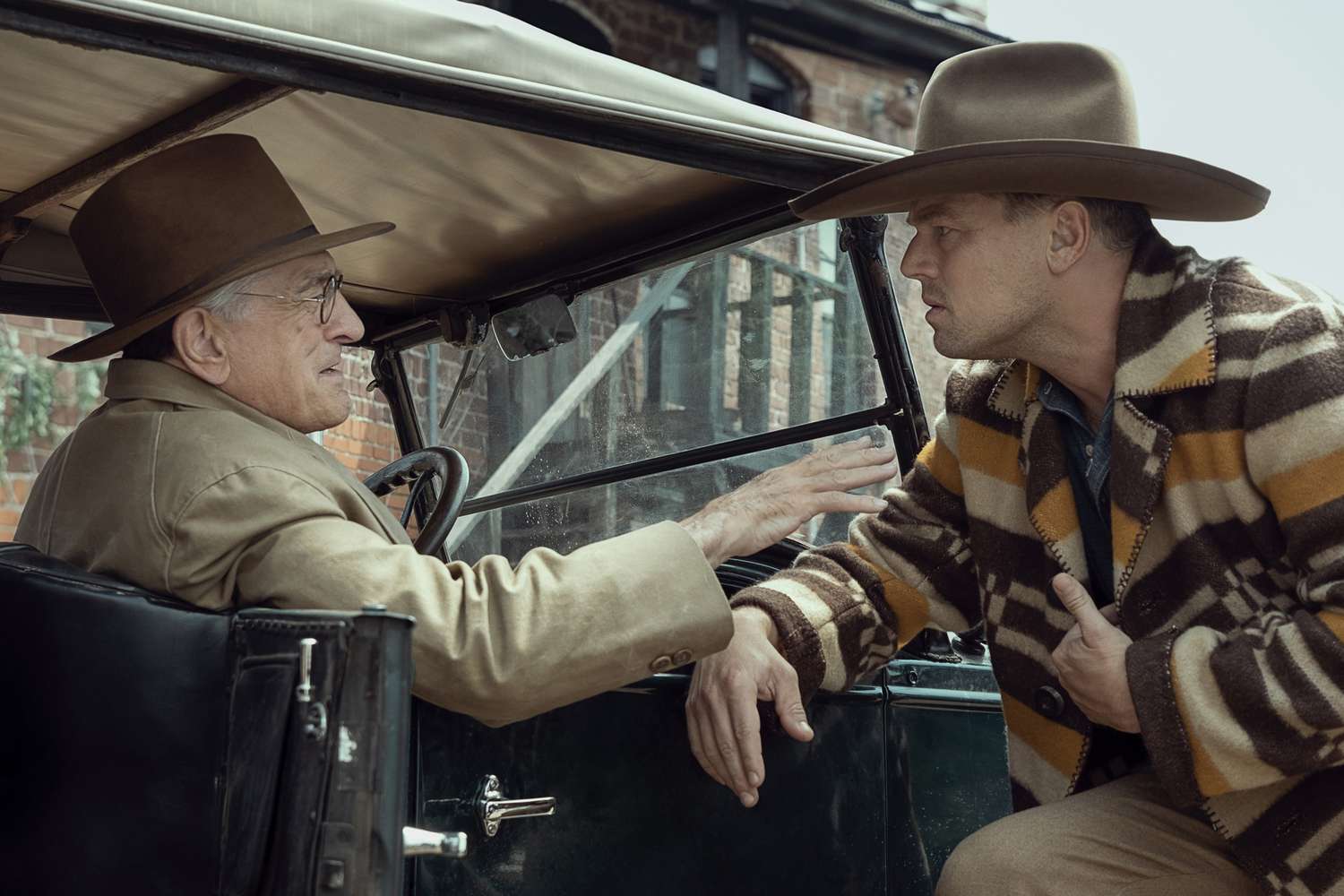
Leonardo DiCaprio does well as Ernest Hale. Charming, likable, and eager to please, the character is far more complex than meets the eye. Having played several heartthrob roles early on in his career, DiCaprio has evolved and increased his range by taking on more offbeat, challenging roles of various types. What’s more, his take on Ernest is that of a greedy, gullible man who’s also torn between family blood and true love. Even though many of the things he does are reprehensible, the character feels like a very complicated, flawed individual. This makes him all the more compelling to watch.
De Niro is in fine form as William Hale. The veteran actor proves he is still capable of delivering a solid performance with gravitas. Unlike his previous roles as brutal mobsters and alienated individuals, De Niro shines as a seemingly generous man who’s hiding his true, conniving self. He even comes off as an unofficially adopted grandfatherly figure to the Osage tribe, which makes his duplicitous nature all the more unsettling to behold.
Yet the real revelation of the film is Lily Gladstone. While DiCaprio and De Niro are headlining the movie, Mollie remains a major focal point of the story. During one particularly tense scene, the character converses with other Osage women in their own dialect while observing the dealings of
the white men rolling into Osage County. It is clear she is deeply astute and perceptive of how others perceive her. Even when Miss Gladstone isn’t speaking, her body language and facial reactions show a sense of self-awareness and control. Her best moment comes in a quiet, somber conversation with DiCaprio over the unraveling state of their marriage. Gladstone is a major highlight of the film.
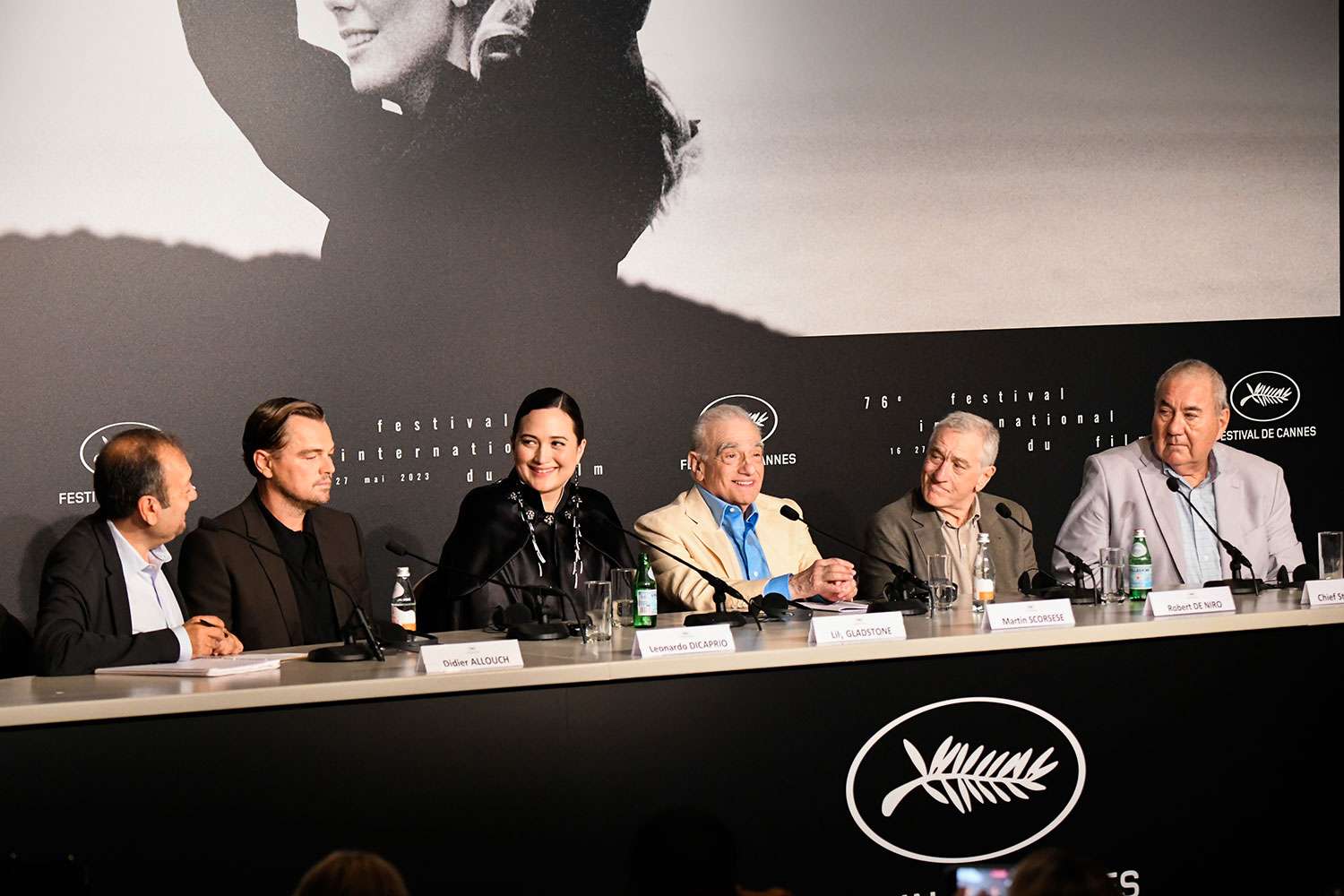
The supporting performances are also impressive. Jesse Plemons is professional and no-nonsense as investigator Tom White. John Lithgow is convincing as prosecutor Peter Leaward. Having played eccentrics, sinister types, naive man-children, and authoritarian figures, it is refreshing to see the thespian actor in a more driven, passionate role that is a departure from his past performances. Brendan Fraser makes a larger-than-life presence as blustering, confrontational defense attorney W.S. Hamilton in the third act, and he holds his own opposite DiCaprio in a tense courtroom sequence. In one of the most surprising scenes, Mr. Scorsese himself appears onscreen in an amusing cameo and delivers a compelling monologue. Unlike his past appearances in film (where he’s an off-screen voice or a silent background extra), the director is front and center for the first time on camera, and the result is quite a sight to behold.
In terms of production values, the movie is quite beautiful to look at. Cinematographer Rodrigo Prieto (The Wolf of Wall Street and The Irishman) re-teams with Scorsese for their third collaboration, and the visuals he captures are amazing. The result is an Oklahoma of the early 20th Century in all its historical accuracy. Thelma Schoonmaker, a longtime Scorsese collaborator, returns to do the editing work, and despite its 206 minute running time, the narrative never comes off as long, bloated, or meandering. The late Robbie Robertson contributed to the film’s score, and it feels both contemporary (with guitar work) and culturally diverse with Osage songs and chanting included in the final cut.
Killers of The Flower Moon is also successful in depicting the historical era of the late 1910s to mid-1920s. Much like his earlier film Gangs of New York, Scorsese depicts America as being a troubled nation still trying to find itself. For instance, in a 1921 scene, the characters are shown watching a newsreel of the Tulsa race riot, which destroyed an entire black community in Oklahoma and led to the death of hundreds. This is a very chilling sequence because it hints at what doom the Osage nation could be facing. Another disturbing scene involves the local Ku Klux Klan chapter holding a public demonstration parade in the streets. It should be remembered that racism and prejudice were common views and even condoned back then.
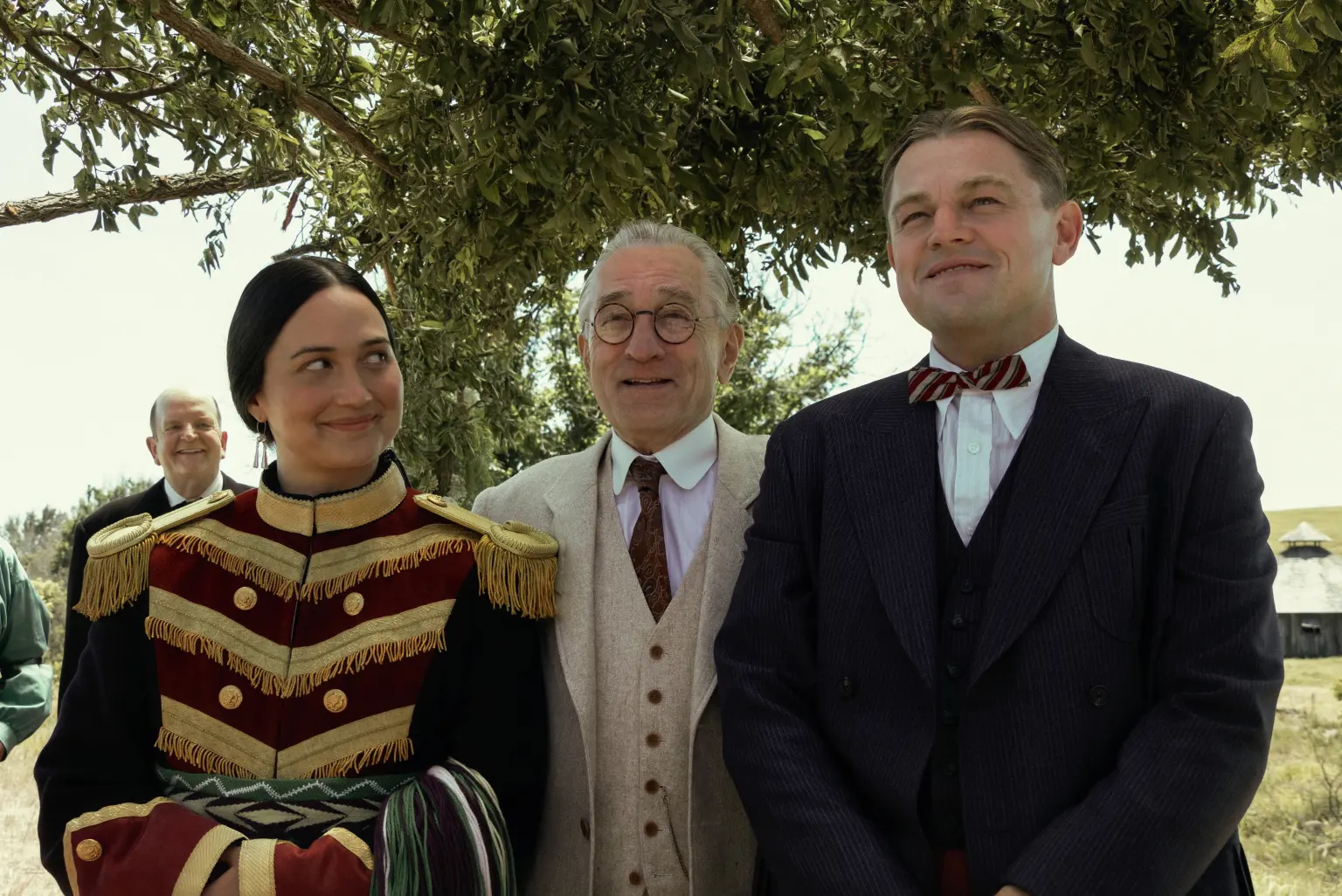
Overall, the film is a compelling document of American history and the Osage nation. Scorsese has succeeded in delivering yet another epic with Killers of the Flower Moon. DiCaprio, Gladstone, and De Niro are brilliant in their roles. Four out of four stars.


